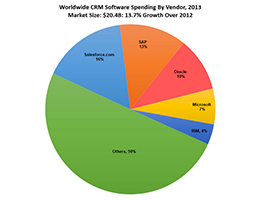Brands are making a significant investment to find customers and move them through the sales cycle. Yet the end-goal of this long-winded engagement process is a transaction. Sherri Kolomayz, Senior Marketing Manager, Infor Global Solutions talks about how CRM can help turn this into an ongoing, personalized and two-way relationship.
It is no longer enough to merely provide a smooth transaction. Business to business (B2B) customers crave worthwhile relationships with the companies they buy from, so sellers must rethink the engagement process. Traditionally, a transaction marked the end of the engagement cycle for both parties. This is no longer the case. In the current environment, every interaction with a prospect is part of the buyer’s journey and adds to their overall experience. In fact, the quality of the experience has become a deciding factor for buyers when differentiating between prospective sellers. A single negative interaction before, during, or after a transaction can easily jeopardize the entire customer relationship. Companies need to manage each touchpoint with care, employing a coordinated and consistent approach along the way.
With the significant investment companies make to find customers and move them through the sales cycle, it is shortsighted to make a transaction the end-goal of the engagement process. The real value -for customers and sellers- comes from an ongoing, personalized and two-way relationship.

Experiences are Holistic, but Enterprises are Segmented
To build rich and relevant experiences that customers want, companies naturally look to customer relationship management (CRM) technology. However, most organizations tend to use CRM in a very specific way, mostly to support the sales cycle. But from a customer’s point of view, the sales cycle is just one facet of the experience. The customer experience is holistic, but sellers typically have a siloed, segmented approach to serving customers. Sales, marketing, and service departments tend to rely on point solutions designed for how they work and how they see the world which may not align with what the customer actually experiences.
The root of the problem lies in the question of who owns the customer relationship. Sales have traditionally held this role, and conventional CRM systems are designed to help sales personnel capture, access, and update customer information related to their primary objective: closing transactions.
The problem is that these systems do not take into account the customer-related needs of the other departments or how customer information should be aggregated and made available company-wide. To improve the sales experience for customers and employees alike, companies have to fight the urge to implement disparate systems that cannot work together as one cohesive unit. Furthermore, they must work together to collectively improve every employee’s ability to view and positively influence each touchpoint in the customer experience.
Extend CRM Usage Beyond Sales
As companies grow larger, delivering a consistent experience across an increasingly complex web of products and offerings becomes exponentially more difficult. The understanding of the customer must become more nuanced, granular, and broader in scope. CRM can assist in this process by enabling everyone in the organization who interacts with customers to monitor ongoing customer interactions, across departments. It becomes the repository of customer insight, regardless of where that insight originates in the enterprise, and it helps structure and guides those customer-driven processes that cross the organizational boundaries and are irrelevant to the customer.
In addition to sales, marketing and customer service can also benefit from real-time visibility into rich customer profiles and interaction history. Some of the ways this more inclusive approach to CRM can benefit each member of the customer-facing team include:
The sales department can gain real-time insights into customer activity -beyond what and how they buy- helping provide a richer context for future interactions.
The marketing department can use the treasure trove of fresh customer data from the CRM solution to craft timely and targeted marketing messages that have a better chance of driving activity.
The customer service department can provide a seamless experience that reduces the need for a frustrated customer to explain their situation multiple times throughout the problem-resolution process.
The executive bench can use real-time customer data to determine which programs, services, and initiatives require the investment of their time and energy.
Deploying Advanced Tech For a More Personal Touch
CRM is a widely adopted technology in virtually every B2B segment, but B2B sellers need to rethink their use of CRM to involve more disciplines and specializations. When utilized across organizational silos, a seamless CRM system can create richer and more relevant customer experiences. An integrated CRM solution gives virtually any employee the information needed to address a customer’s need at the point of origin, rather than bouncing the customer from person to person across the company, resulting in a disconnected customer experience. Ironically, delivering on the promise of a more personal relationship requires a more intensive commitment to CRM technology and customer data and a more inclusive definition of who is responsible for the quality of the customer’s experience. In other words, it takes advanced technology to make the customer experience more human.







